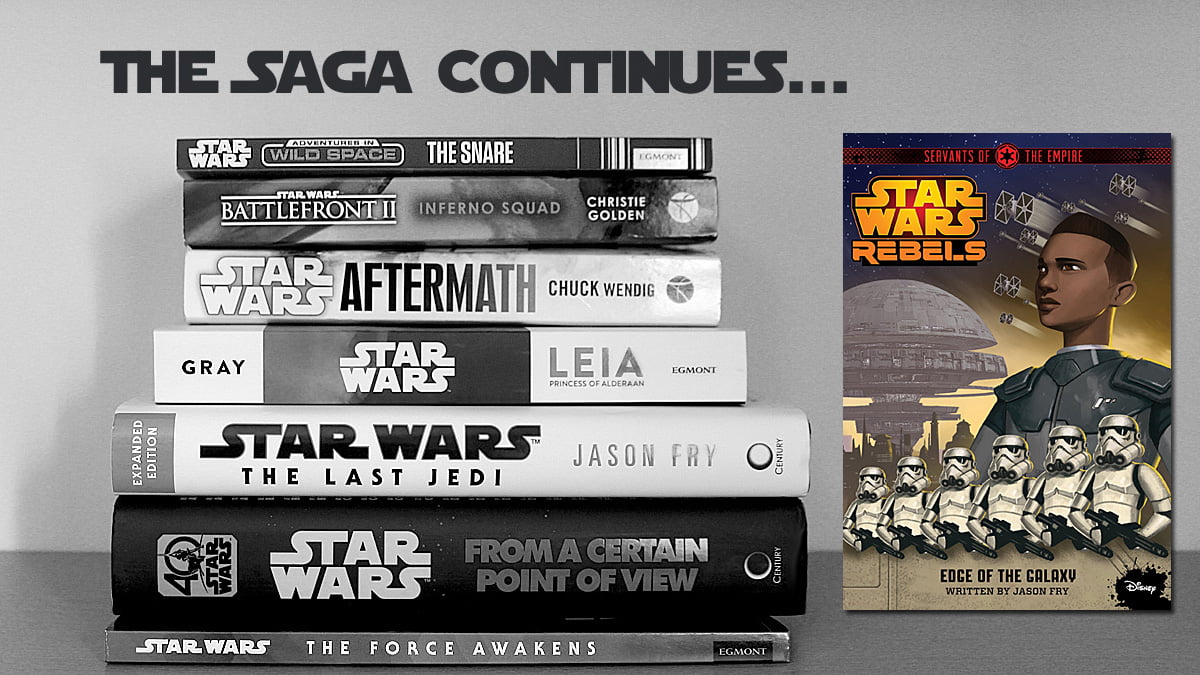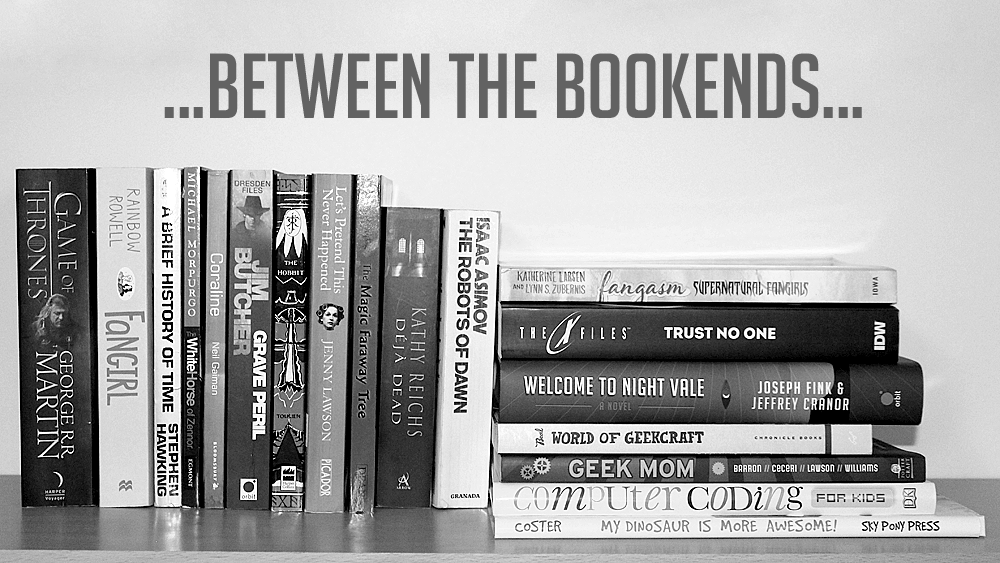
What a few weeks it’s been since our last Between the Bookends.
As we settle into our new normal, some of us are finding ourselves with unprecedented amounts of reading time, while others struggle to fit even a few moments of reading into overcrowded days of working from home and sudden homeschooling. Whatever situation you find yourself in, GeekMom hopes we can offer you some support. Here are some of the books we’ve been reading over the last month that we hope you will enjoy.
Please note: This post contains affiliate links.
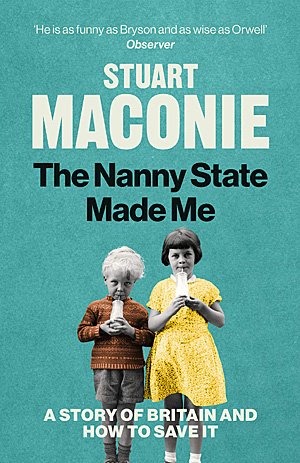
The Nanny State Made Me by Stuart Maconie
Sophie’s first book of the month was The Nanny State Made Me by Stuart Maconie. The “Nanny State” is a British colloquialism for what many Americans would term “big government” – a government that provides medical care, social housing, libraries, leisure facilities, and other services for its people. It’s a form of government that thrived in Britain in the decades after World War Two, ending during the 80s and the rise of Thatcherism.
In The Nanny State Made Me, Stuart Maconie investigates how the Nanny State helped raised his generation. The chapters cover the NHS, schools, libraries, benefits, and public transport among other subjects and explores the consequences of privatization combined with years of austerity for the average Brit. It’s not a balanced book.
It’s obvious from the title that Maconie is strongly in favor of this form of government and he argues vehemently for its many benefits. After reading, it’s hard to disagree with him, although given that Sophie already agreed with him before picking the book up, she admits her opinion is heavily biased.
With everything going on over the last few weeks and strong arguments calling for nationalized health care in the US to help prevent the spread of deadly contagions, this book feels incredibly timely. We’re all in this together and The Nanny State Made Me shows how a country can pull together even more effectively with the help of a caring government that puts its people before profits.
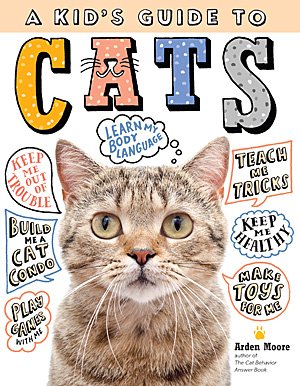
A Kid’s Guide to Cats by Arden Moore
A Kid’s Guide to Cats by Arden Moore was Sophie’s second book of the month. This is a fun yet practical guide book aimed at middle-grade readers who want to take on more responsibility looking after their pet cats and covers everything from diet and health to understanding body language and some basics on training your cat to do tricks. A matching book titled A Kid’s Guide to Dogs is also available from the same author.
The book is divided into four sections, “My Cat, My Pal,, “Make a Happy Home For Your Cat,” “School Time For Your Cat” and “Be Your Cat’s Best Health Ally.” Every page is colorful and filled with photographs and cartoons, with no large blocks of text, which makes this book both easy-to-read as a whole and also easy to dip in and out of as a reference book. There are multiple Ask the Vet sections with frequently asked questions, pros, and cons to letting your cat go outdoors, a printable chore chart, and lists of suitable and unsuitable treat foods – did you know cats can enjoy apple slices and bananas? There are also some quizzes scattered throughout.
At the beginning of the book we are introduced to the author – Arden – and, most importantly, her cat Casey. Casey is a friendly orange tabby and he pops up throughout the book in little “Casey’s Comment” boxes where he gives a cat’s perspective on the current subject. Casey’s Comments are always funny and my ten-year-old cat-loving son found them to be some of his favorite parts of the book.
Despite owning cats for 15 years, Sophie still discovered interesting facts in this book that she didn’t know about the small furry creatures that share her home. Cat-loving kids will love A Kid’s Guide to Cats and adults new to cat ownership may well find it easier to digest than many lengthy guides to the subject aimed at them.

Daphne and Velma: The Vanishing Girl by Josephine Ruby
Sophie’s final book this month was Daphne and Velma: The Vanishing Girl by Josephine Ruby. This first book in a new series takes the classic cartoon characters and drops them into the YA mystery genre. As a lifelong fan of Scooby-Doo, Sophie wasn’t sure how much she would enjoy this re-imagining but found herself pleasantly surprised.
In The Vanishing Girl, Daphne and Velma are not friends. Daphne is popular, Velma is a nerd, and the two haven’t spoken since their childhood friendship fell apart in middle school. Now, Daphne hates herself and her spoiled rich-girl life and Velma is trying to hold her family together while her father battles depression. But when Daphne’s best friend Marcy vanishes – days after claiming to have seen a real ghost at the Haunted Village tourist attraction – the two end up working together to solve the mystery.
The Vanishing Girl does a great job of pulling together many classic Scooby-Doo tropes – Shaggy and his endless appetite, a supernatural mystery with a more realty-related explanation, even Velma’s catchphrase “Jinkies!” finds a clever new use – while coming across as a more adult/less cartoonish story. Sophie was thrilled to see that even The Hex Girls put in an appearance! This is clearly a Scooby-Doo story, not any old YA mystery with the names slapped onto brand new characters which is something Sophie feared at the beginning.
As the title suggests, this is a Daphne and Velma-centric series so Shaggy and Fred (and Scooby himself) are only side characters, although the ending suggests we could be seeing more of the boys in the sequel. Sophie will definitely be picking up that sequel – titled The Dark Deception – later this year and would recommend this series to fans of Riverdale and The Chilling Adventures of Sabrina.
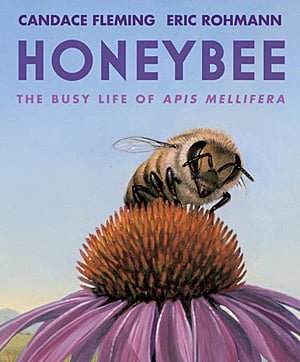
Honeybee: The Busy Life of Apis Mellifera By Candace Fleming and Eric Rohmann
Rebecca’s first book of the month was Honeybee by Candace Fleming and Eric Rohmann. Honeybee is a highly detailed, up-close look at the life of a honeybee called Apis. This is not a “cute” picture book, but rather a bee’s-eye view of life in the hive, following one bee from birth until death. The common storyline is that during each stage of this bee’s life, the page ends with “Ready for flying?” But there are many stages to a bee’s life and it takes the whole book before a glorious four-page spread showing our bee finally taking flight.
The illustrations are worthy of a textbook and so close up, you can see the hair on the bee legs and lots of fine detail of the hive and work involved. This is a perfect book for a questioning or curious child who loves to read about the natural world. After the story ends, there are a couple of pages with much information for the parent to read about how to keep our bee populations safe and healthy.

When You Need Wings By Lita Judge
Next, Rebecca enjoyed When You Need Wings by Lita Judge – a book that will inspire the parents reading it as much as the child. With friendly and colorful illustrations, this book captures a moment when a small girl needs to call upon her inner strength. She is starting preschool and is nervous.
The book begins with how she is overwhelmed by the new situation around her. She closes her eyes and goes inward into her special place. Her inner sanctuary is depicted by a happy woodland with animals for friends that dance, sing, play, and roar with her. Knowing she has this place of peace inside her, she is able to spread her wings and have the courage to face her new situation.
When You Need Wings is told in the second person, so reading it out loud will be talking to the child about how to find their own inner peaceful place that can help them deal with all challenging situations. It’s a beautiful book.
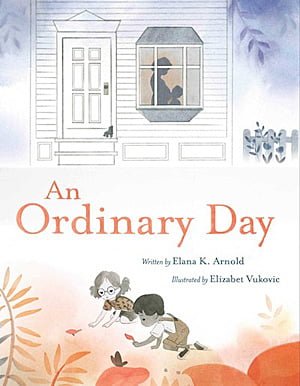
An Ordinary Day By Elana K. Arnold and Elizabet Vukovic
Finally, Rebecca picked up An Ordinary Day By Elana K. Arnold and Elizabet Vukovic. The cycles of life are portrayed in a simple, yet effective way for small children in this picture book. The colors are minimal and used in a soft wash across the pages. The characters are from all ethnicities and inclusive families. An ordinary neighborhood is having two extraordinary events happening side by side.
“Music played here too, soft and without too many words.”
Two doctors (though they are not named as such) enter neighboring houses. One is there to administer a drug to put a beloved pet to sleep. The other is to help deliver a baby. The story is conveyed by very simple words to explain each situation:
“In the house to the left, the family prepared to say goodbye as the visitor filled a syringe of medicine. In the house on the right, the family prepared to say hello as the visitor rubbed circles of oil into the woman’s back.”
Both situations are filled with close hugs from family members. The author and illustrator do an extraordinary job taking two extreme situations and placing them in such a gentle, soothing tale. This would be a great book to read to a child who has experienced either of these events or will. It is also a way to introduce all children to the cycles of life and death where both are to be met with love and tenderness.
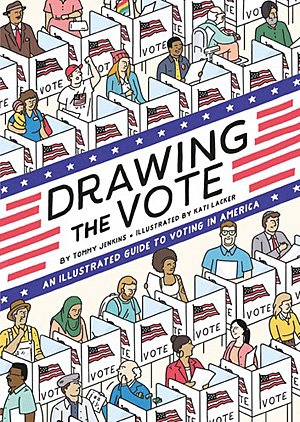
Drawing The Vote: An Illustrated Guide to Voting in America by Tommy Jenkins, Illustrated by Kati Lacker
While shut away and thinking about all that 2020 is bringing, Sarah has been reading Drawing the Vote: An Illustrated Guide to Voting in America. Written by Tommy Jenkins and beautifully illustrated by Kati Lacker, Drawing the Vote takes the reader from “No taxation without representation” right up to current times and the Census of 2020.
The majority of the book is apolitical, dealing with historical events, and artfully detailing the changing nature of political parties in the US, as well as the ways in which the parties changed over time. Constitutional amendments are featured alongside women’s suffrage, Sarah particularly liked the way it dealt with the tension between securing the right to votes for women and for African Americans.
The introduction to the book is highly charged, there is no denying the views of the author and illustrator on our current political system. However, if your political leanings are not the same as the authors, this is still a great history of voting in America. The book does deal with the 2016 election in some detail, so a stiff drink may be in order. Some of the book is hard to look at, cartoon depictions of lynchings are never nice, but the book does not shy away from some of the more disgusting parts of our history. You will never use the term “Grandfathered” in the same haphazard way again.
This is a great year to brush up voting rights, especially the laws surrounding distance voting, and this book is a great start. More than anything it encourages people to be aware and to use their vote. Whichever way you plan on voting, you should use your right, it was hard fought for.
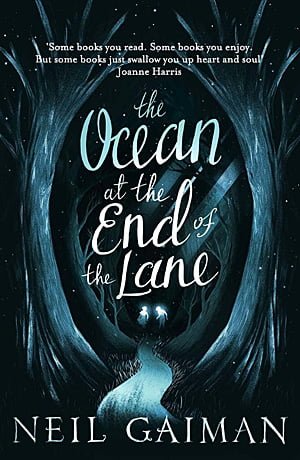
The Ocean at The End of The Lane by Neil Gaiman
Lisa received the brief dreamy, melancholy story The Ocean at the End of The Lane by Neil Gaiman as a gift in December, but she didn’t have time to pick it up until recently. When she did, she wasn’t able to put it down.
The tale is of a man who, upon returning to his childhood home after attending a funeral, remembers a strange and horrifying, otherworldly experience of his childhood.
This is Gaiman’s storytelling at its most compelling. Lisa felt the reading experience was like trying to wake up from an anxious, unpleasant dream, while at the same trying to get to the end of this story. The story is at times, genuinely frightening, at other times heartbreaking, and still at other times exceptionally frustrating. The reader will, like the young protagonist, want to escape and run away, but will at other times feel a sense of nostalgia, like a warm blanket covering someone from a cold wind.
One particular short chapter in the book, which dealt with a worm the young narrator finds lodged in his foot, was so unpleasant Lisa had to put the book down for a minute just to “shake it off.”
Being told from the point-of-view of an adult, who is flashing back at what it was like to be so young and vulnerable during this experience, it really drives home the feeling adults sometimes have with the memories of their own past. What have we suppressed? What have we forgotten? With what feelings have we become disconnected? Sometimes, unpleasant memories are placed back in the mind for a good reason, but some need to be reserved.
When Lisa finished with the story, she felt exhausted from this dreamlike experience, but the tale was so interesting she didn’t mind at all.
GeekMom received copies of some titles for review purposes.

